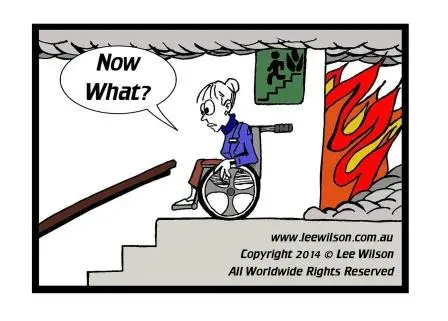Crisis Intervention: A Comprehensive Approach to Emergency Situations Involving Disabilities
In any emergency situation, it’s essential to have a comprehensive approach that includes everyone, including those with disabilities. As society evolves, we become more aware of the specific challenges and limitations people with disabilities face. These challenges are particularly pronounced in emergency situations, where quick thinking and fast action can mean the difference between life and death. In this post, we’ll explore the importance of crisis intervention in emergency situations involving disabilities and how businesses and clients can take steps to ensure everyone’s safety.

1. Understanding Disability-Inclusive Crisis Intervention:
Indeed, disabilities can encompass a broad range of physical, emotional, or intellectual impairments. As a result, everyone with a disability will react differently in situations of crisis. Disability-inclusive crisis intervention recognizes that everyone is different and requires unique assistance. Additionally, it involves understanding the person’s characteristics and abilities, such as communication style. With this knowledge, the first step in comprehensive crisis intervention involves understanding everyone’s unique needs.
2. Ability to Manage Emergency Situations:
Successful crisis intervention requires proper training and experience. Everyone should have an understanding of the different types of disabilities and how they may impact emergency situations. Additionally, they should practice handling simulations that may occur in real-life situations. Proper training helps everyone maintain the level of expertise needed to help with crisis interventions.
3. Specialised Equipment for Emergency Situations:
Disabilities will never affect every aspect of a person’s life, but they do make certain things more challenging. For instance, emergency mobility equipment, like a stair lift, is essential if someone in a wheelchair needs to move up or down the stairs. Having proper disability equipment in place is an important aspect of comprehensive crisis intervention.
4. Compassionate Communication:
In crisis situations, communication can be challenging, and it’s even more challenging when those involved speak different languages or have difficulty communicating. By using compassionate communication, we can all improve our communications and better connect with those in need. It entails showing empathy and compassion, actively listening, and using clear language. By respecting their dignity, we guarantee that everyone is on a level playing field.
5. Follow-Up and Support after an Emergency:
Crisis interventions can be traumatic, particularly when dealing with different disabilities. Follow-up and support are vital for ensuring that those affected receive adequate care and are safe. Businesses or clients should provide required or necessary support services, such as counseling. The goal is to minimize lasting psychological hardship that may have devastating effects beyond the emergency situation.
Conclusion:
In conclusion, comprehensive crisis intervention is essential when dealing with emergencies involving people with disabilities. It involves an understanding of disability-inclusive approaches, training, the right equipment, empathy, and support services. These measures guarantee everyone’s safety, including the disabled. When implemented correctly, clients and businesses work together to ensure that everyone is safe in these uncertain times.



